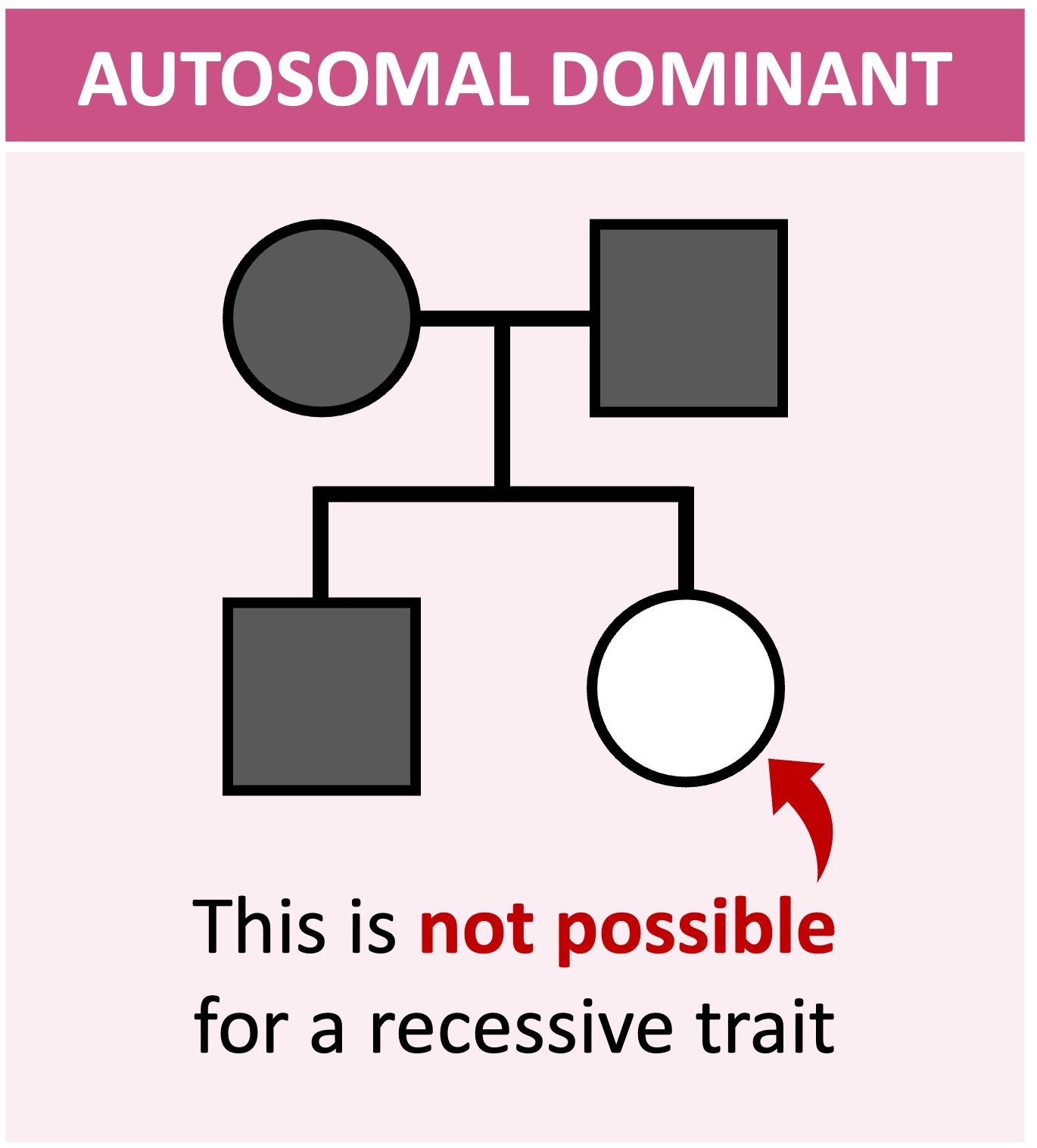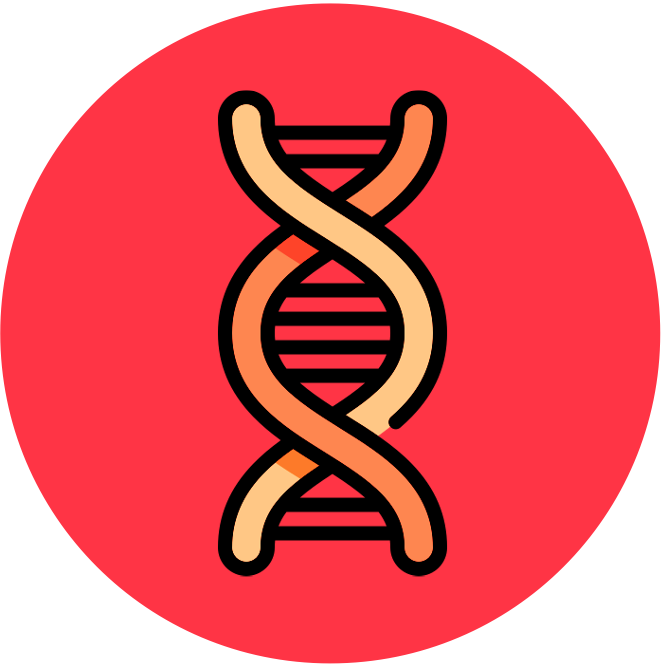

Pedigree Charts
A pedigree is a chart of the genetic history of a family over several generations
-
Males are represented as squares, while females are represented as circles
-
Shaded symbols mean an individual is affected by a condition, while an unshaded symbol means they are unaffected
-
Generations are labeled with roman numerals and individuals are numbered according to age (oldest on the left)
-
A horizontal line between man and woman represents mating and resulting children are shown as offshoots to this line
-
Note: Unions between close relatives is typically discouraged because inbreeding reduces genetic diversity and increases the possibility of inheriting recessive disease conditions
-
Autosomal Inheritance
Autosomal conditions refer to any genetic disorders caused by mutations to genes on any of the first 22 homologous pairs of chromosomes
-
Dominant and recessive disease conditions may be identified only if certain patterns occur (otherwise it cannot be confirmed)
Autosomal Dominant
-
If both parents are affected and an offspring is unaffected, the trait must be dominant (parents are both heterozygous)
-
All affected individuals must have at least one affected parent
-
If both parents are unaffected, all offspring must be unaffected (homozygous recessive)
Autosomal Recessive
-
If both parents are unaffected and an offspring is affected, the trait must be recessive (parents are heterozygous carriers)
-
If both parents show a trait, all offspring must also exhibit the trait (homozygous recessive)


X-Linked Inheritance
X-linked conditions refer to any genetic disorders caused by mutations to genes on the X chromosome (Y-linked mutations are considerably rarer)
-
It is not actually possible to confirm X-linked inheritance from a pedigree chart (any sex bias could be a product of chance), but it is possible to disprove it
X-Linked Dominant
-
If a male shows a trait, so too must all daughters as well as his mother
-
An unaffected mother cannot have affected sons (or an affected father)
-
X-linked dominant traits tend to be more common in females (this is not sufficient evidence though)
X-Linked Recessive
-
If a female shows a trait, so too must all sons as well as her father
-
An unaffected mother can have affected sons if she is a carrier (heterozygous)
-
X-linked recessive traits tend to be more common in males (this is not sufficient evidence though)





